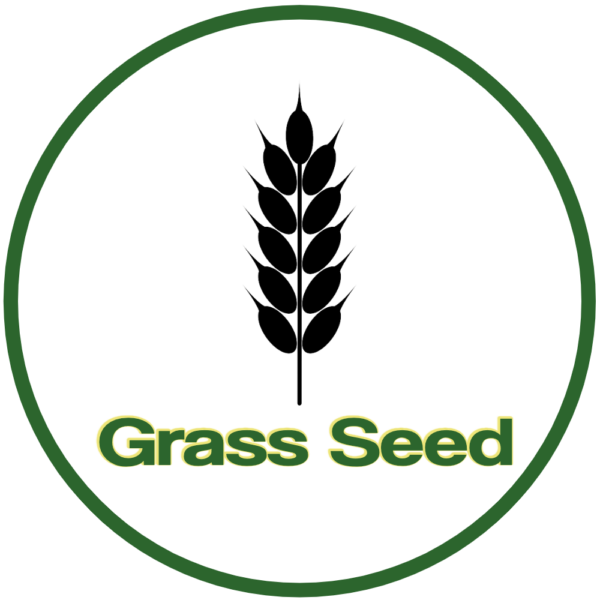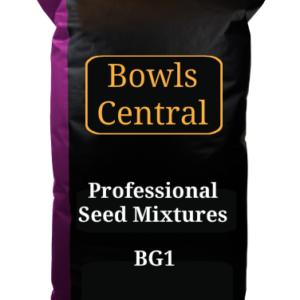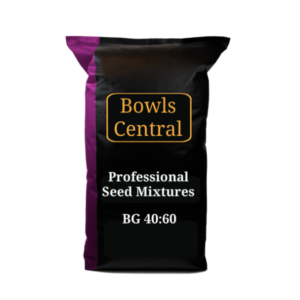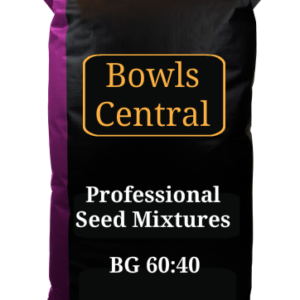I am frequently asked about the difference between our 80/20, 60/40 and 40/60 Premium Fescue/Bent Grass Seed Mixes. On the surface, it might just look like a simple percentage change, but there’s quite a lot going on behind those numbers that can affect both the long-term performance of your green and the cost of the mix.
Here’s a breakdown that makes the comparison easier to understand:
The Basics: What Do the Ratios Mean?
Most bowling green seed mixes contain Fescues and Bentgrasses, which are the ideal species for fine turf greens. The ratio (e.g. 80/20 or 40/60) refers to the weight of each grass type in the mix:
- 80/20 by weight = 80% Fescue, 20% Bentgrass
- 40/60 by weight = 40% Fescue, 60% Bentgrass
At first glance, it might seem the 80/20 offers more Fescue and therefore better value, but it’s important to understand the difference in seed size and function.
Nursery Crop vs. Permanent Sward
- Fescue is a larger, faster-germinating seed..actually 6-8 times larger than an average Bentgrass Seed! It establishes quickly and acts like a nursery crop, providing early green cover and some protection for the slower-growing Bentgrass.
- Bentgrass has a much smaller seed, takes longer to establish, but once established, it creates a dense, fine, and long-lasting sward that forms the high-performance surface we aim for on bowling greens.
Over time, Bentgrass will usually become the dominant species, and the goal is always to encourage its development and presence in the green.
Seed Count
The most important difference is not in the weight, but in the number of seeds per gram:
- Fescue has between 500-1000 seeds per gram depending on species and variety
- Bentgrass has around 10,000 seeds per gram
Let’s break this down in practical terms:
In 1kg of seed:
- 80/20 mix (by weight) gives approx:
- 800g Fescue = 400,000 seeds
- 200g Bent = 2,000,000 seeds
- Total: = 2.4 million seeds
- 40/60 mix (by weight) gives approx:
- 400g Fescue = 200,000 seeds
- 600g Bent = 6,000,000 seeds
- Total: = 6.2 million seeds
So the 40/60, contains almost three times as many grass seeds, with a much greater proportion of the long-term species (Bentgrass) that will usually dominate the sward.
Why the 40/60 Mix Costs More
There are two main reasons:
- Bentgrass is much more expensive to produce and process than Fescue.
- There’s a lot more of it in the 40/60 mix, both by weight and especially by seed count.
So, while it might look more expensive at first glance, the 40/60 mix gives you far more of the species that really matters for high performance over the long term.
Over-Seeding rates
Over-seeding rates vary for the various mixes. I recommend the following rates:
80:20 – 20g per m2
60:40 – 15g per m2
40:60 – 10g per m2
Which Mix Should You Choose?
- If you’re doing routine overseeding or patching, and want quicker visual cover, the 80/20 mix is great and very cost-effective.
- But if you’re doing a full renovation on a damaged or worn out green or a full reseed, a mix with a higher bentgrass number is probably a better choice.
Recommended products
If you’re ever unsure which one to choose for your particular situation, just let me know and I’ll be happy to guide you. Full Grass Seed Range here.






Interesting article John. I didn’t know the different properties and sizes of fescue and bent. But where does dwarf rye fit into the picture since it is a key constituent of your BG mixes?
Hi Frank
Ryegrass (Lolium perenne) is by far the largest of the 3 seeds, quite a chunky seed actually. We’ll have to agree to disagree on the “key constituent” part, however, as I’m not a fan of rye grass in bowling greens and never recommend it. I do have one mix in the shop, as I am occasionally asked for a good dwarf rye recovery mix. This is usually used in desperation, when a green has been decimated by leatherjackets over winter/spring and needs a very fast repair job.
The comparison though is roughly as follows: